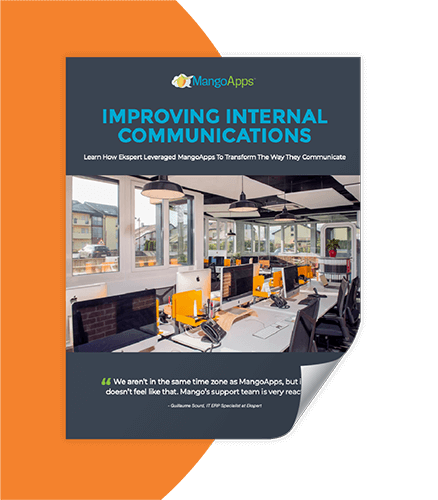As the modern workplace evolves, the need for streamlined communication and collaboration is paramount. While a cloud-based intranet has its merits and benefits, there are several sectors that find immense value in on-premise intranet solutions. These sectors are often in highly regulated industries like healthcare, government, and financial institutions where an on-premise intranet provides a tailored platform in which data security, customization, and compliance are not just afterthoughts but driving factors.
If you’re considering an on-premise intranet, setting it up can be daunting. This guide provides actionable advice and best practices to ensure a smooth transition.
1. Assess Your Needs: Start with a clear understanding of what you want from the intranet and the costs associated with on-premise solutions. Does the healthcare institution need a platform solely for communication, or will it manage patient records? Does the government department need data sovereignty assurance? Before you get too far into the process, make sure you understand the typical reasons for choosing cloud vs. on-premise intranets.
2. Infrastructure Planning: Ensure your servers and related infrastructure can support the intranet platform. High-speed networks, backup systems, and data redundancy should be prioritized.
3. Choose the Right Software: There are several on-premise intranet solutions available, so choosing one that aligns with your needs and industry requirements is essential. MangoApps stands out as a leading modern intranet vendor, renowned for its comprehensive features tailored for industries with stringent requirements. Read our case study about on-premise customer Ekspert for a real-world example of our platform’s efficacy.
4. Design and Customization: One significant benefit of an on-premise solution is the level of customization available. Design it to mirror company branding, incorporate necessary tools, and discard unneeded features.
5. Integrate with Existing Systems: If you’re a financial institution with legacy software, ensure your chosen intranet seamlessly integrates. This might involve specialized APIs or middleware.
6. Test the System: Before a full-scale launch, test the system with a select group of users. This beta testing phase will highlight potential glitches and areas for improvement.
7. Train Your Team: A tool is only as good as its user. Organize comprehensive training sessions for different departments. An employee familiar with the intranet’s functionalities will inevitably be a better user.
8. Data Migration: Data migration is a critical step for those transitioning from another system. Ensure data integrity, and consider using professionals if the volume of data is extensive.
9. Set Access Levels: Not every employee needs access to all information. Use robust access controls, especially critical for sectors like healthcare, where patient confidentiality is paramount.
10. Launch and Continuous Feedback: Once you’ve thoroughly tested the system and trained your team, it’s launch time. But the work doesn’t end there. Continuously solicit feedback to refine and enhance the platform.
11. Regular Updates and Maintenance: Regular software updates and hardware maintenance are essential to keep your on-premise intranet solution running smoothly. Make sure the vendor you choose supports easy upgrades and maintenance.
12. Review Security Protocols: As cyber threats evolve, so should your security protocols. Regularly review and update them to ensure your data remains protected.

Ensuring Compliance In The Financial Sector
Learn how Ekspert leveraged MangoApps’ on-premise intranet to transform the way its employees communicate.
Explore a Comprehensive On-Premise Solution and Real-world Implementations
Are you searching for an on-premise intranet solution tailored to meet the unique demands of regulated industries? Dive deep into the MangoApps On-premise solution. It offers robust features, and you can also explore compelling case studies, providing insights into its practical implementations in various sectors.







